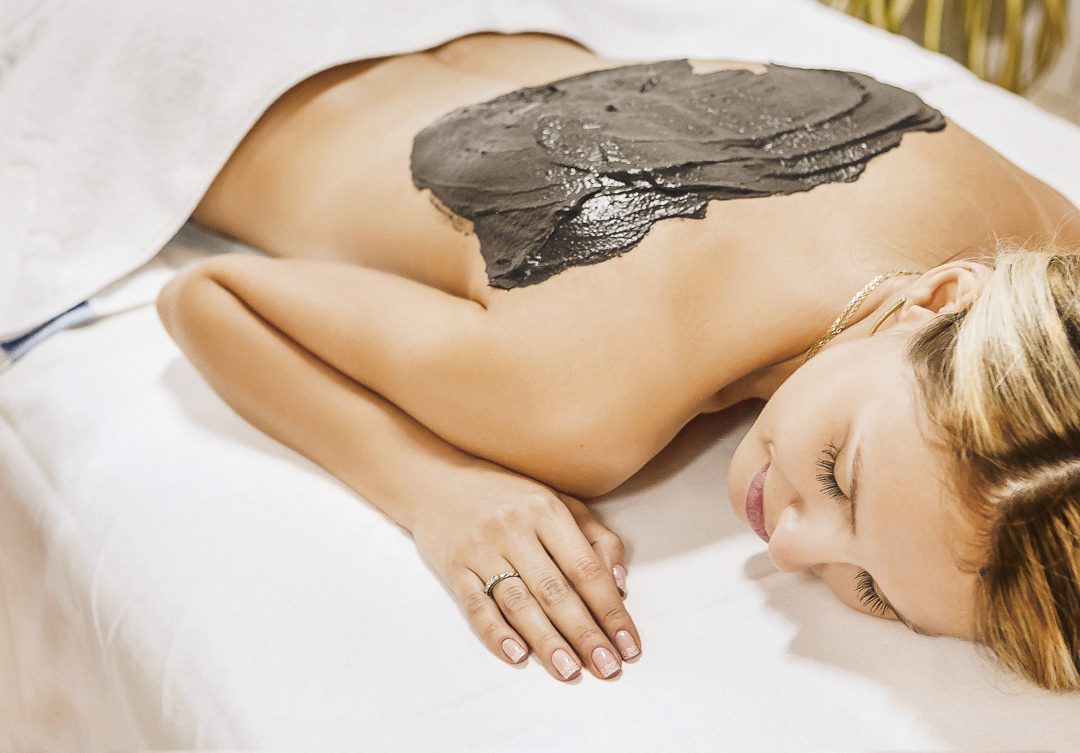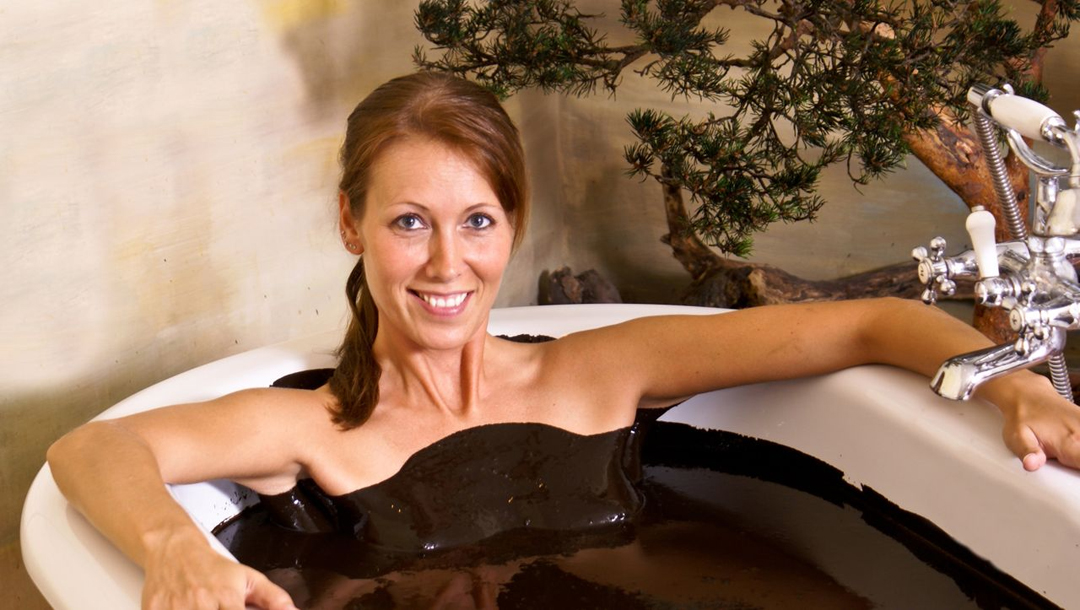Mud may not be one of the most glamorous forms of treatment in the world, but it is certainly one of the oldest. Mud packs and masks were used by the ancient Egyptians and Romans for various ailments as well as beauty treatments, and were often given with other spa treatments as part of a cure. Therapeutic mud often comes from areas around mineral springs, and the high mineral content of the mud is regarded as one of the main reasons for its beneficial effects.
Unlike other mud used in the spa industry, Torf Moor Mud contains virtually no clay (less then 3%) and consists of organic residue of herbs, flowers and grasses. Over period of thousands of years this residue was transformed into a fine paste that easily dissolves in the water, has unusual concentration of bio-minerals, trace elements, vitamins, amino acids, plant hormones and fatty acids in a molecular form that is easy for the human skin to absorb. Think of it as a plant extract not from just one plant, but hundreds that reflects environment of Earth 10.000 years ago, without present day pollution.
It is used not only to beautify, but also to cure multitude of ailments from mobility problems, arthritis, and hormonal imbalance to post surgery recovery and muscle recovery in sport medicine. Its actions are thermo-physical, biochemical, anti-aging, anti-inflammatory, and natural antibiotics. Because peat has chelatic properties (it binds heavy metal isotopes) it is a very strong natural detoxifier.
Therapeutic Mud:
Taking the waters both drinking them and bathing in them as well as all-over mud body wraps are frequently seen as important elements of a health regime and annual spa cure is very much a part of everyday life. People may take cures for specific problems, such as arthritis or psoriasis, or as a more general detoxification.

Although mud treatments are now enjoying something of a revival, people have known of their therapeutic powers for a long period of time. One of the most famous sources of therapeutic mud is the Neydharting Moor, about 60 km (37 miles) from Salzburg in Austria. Neydharting Moor is uniquely rich in decomposed plant life, with over 1000 plant deposits: flowering herbs, seeds, leaves, flowers, tubers, fruit, roots and grasses. Three hundred of them have recognized medicinal properties, and many of them are extinct or even unique to this one site. Medical evidence shows that Moor mud is both anti-inflammatory and astringent. This means it is particularly useful for detoxification, in treating skin disorders such as acne, eczema and psoriasis, and for rheumatism and arthritis. It is used, too, for beauty treatments, to remedy dry hair, and to reduce cellulite.
The mud comes in a variety of forms including body lotion and oil; the Moor mud bath and the Moor mud drink are particularly recommended.
Moor drink and Moor mud bath:
Drinking mud does not sound very appetizing and it does actually look like mud which doesn’t help. However, although a teaspoonful mixed in a glass of water or fruit juice may colour the liquid, it has neither taste nor odour. Take the drink about half an hour before you prepare for a Moor mud bath.

The best time for a Moor mud bath is immediately before bedtime. Make sure the bathroom is warm, and run a deep bath, pouring in the Moor mud according to the instructions on the container. Mix it in well, or you will end up with muddy globules floating around in the water. Put some warm towels close to the bath to use when you come out.
Lie in the bath for 20-30 minutes. Splash the water on your face, too. You can also rinse it through your hair, if you don’t mind having to dry it before you get into bed. Just try to relax in the bath, perhaps with some quiet music in the background. When you are ready to get out, pat yourself dry, but don’t rub the towel over your skin. Leave as much residue from the bath on the surface of your skin as possible. Go to bed as soon as you are dry.
Disclaimer
The Content is not intended to be a substitute for professional medical advice, diagnosis, or treatment. Always seek the advice of your physician or other qualified health provider with any questions you may have regarding a medical condition.
Publisher: Source link







